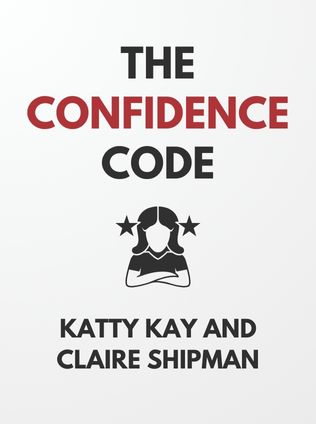
The Confidence Code
The Science and Art of Self-Assurance – What Women Should Know
By Katty Kay and Claire Shipman
Published 04/2014
About the Author
Katty Kay and Claire Shipman are distinguished journalists and authors who have spent their careers exploring the intersection of politics, business, and culture. Katty Kay is a journalist, broadcaster, and a long-time anchor of BBC World News America. She has reported on international affairs from various global hotspots, bringing a nuanced perspective to global events. Claire Shipman is a senior national correspondent for ABC’s Good Morning America and has covered stories of international significance, bringing to light the narratives that shape our world.
Both authors are well-regarded for their insightful analysis and engaging storytelling, which are evident in their collaborative works, including The Confidence Code. This book represents their commitment to exploring gender dynamics in the workplace and beyond, offering practical advice for women seeking to enhance their confidence and, consequently, their success in various facets of life.
Main Idea
The Confidence Code delves deep into the concept of confidence—what it is, why it is crucial, and how it manifests differently in men and women. The book asserts that while confidence is often perceived as an innate quality, it is, in fact, a skill that can be cultivated and developed through conscious effort. The authors argue that confidence is the missing link to success for many women, who often possess the necessary competence but lack the self-assurance to assert themselves and take risks.
The central thesis of the book is that women tend to have less confidence than men, not because they lack abilities, but because of a combination of biological, psychological, and societal factors that undermine their self-belief. Through a blend of scientific research, personal stories, and practical advice, Kay and Shipman provide a roadmap for women to build and harness their confidence, thereby achieving their full potential in both professional and personal arenas.
Table of Contents
- Introduction: The Confidence Gap
- What is Confidence?
- Why Confidence Matters
- The Biology of Confidence
- The Environment of Confidence
- The Confidence Code: Building Blocks
- Applying the Confidence Code
- Building Confidence in Others
- Conclusion: The Future of Confidence
Introduction: The Confidence Gap
The book begins by highlighting a phenomenon that has long puzzled observers: the confidence gap between men and women. Despite their qualifications and competence, women often struggle with self-doubt and are less likely to assert themselves in the workplace or in other competitive environments. This gap is not just a reflection of individual insecurities; it is a systemic issue rooted in both biology and socialization. The authors note, “Women don’t lack the competence; they lack the confidence. And that’s what holds them back” (Kay & Shipman).
The introduction sets the stage for the book’s exploration of how confidence—or the lack thereof—affects women’s lives, from career advancement to personal fulfillment. It also introduces the idea that confidence is not just a matter of positive thinking or self-esteem; it is a function of action, risk-taking, and resilience.
What is Confidence?
Confidence, as defined by the authors, is “the quality that turns thoughts into action.” It is the belief in your ability to succeed and the willingness to take risks, even in the face of potential failure. The book emphasizes that confidence is not just a feeling but a behavior—a mindset that drives individuals to push through challenges and persist despite setbacks.
Katty Kay’s personal experience learning to kiteboard illustrates this concept vividly. She describes how, despite the initial struggles—being dragged by the kite, falling repeatedly, and enduring physical discomfort—she persevered. Over time, she mastered the sport, and with mastery came confidence. This example underscores the book’s assertion that confidence is built through experience and practice, not simply bestowed at birth.
Why Confidence Matters
Confidence is critical for three main reasons:
- Action: Without confidence, even the most skilled individuals may hesitate to act. The authors illustrate this with the story of Jessica Grounds, who co-founded Running Start to encourage young women to run for office. Many of these women had the desire and skills to lead but were held back by a lack of confidence.
- Perception: Confidence often outweighs competence in terms of impact. People naturally gravitate towards and admire those who appear confident. In a study by psychologist Cameron Anderson, students who were the most overconfident—identifying the most fake historical events as real—were also seen as the most influential and respected by their peers.
- Emotional Well-being: Confidence contributes to a sense of purpose and fulfillment. It helps individuals feel engaged, accepted, and motivated, enhancing overall life satisfaction.
Moreover, the book argues that confidence is not merely a personal attribute but a key determinant of professional success. The corporate world, in particular, rewards those who are willing to take risks and assert themselves. However, as Kay and Shipman point out, “Confidence is not about knowing you can do everything. It’s about being willing to try anything” (Kay & Shipman).
Sign up for FREE and get access to 1,400+ books summaries.
You May Also Like
The Subtle Art of Not Giving a F*ck
A Counterintuitive Approach to Living a Good Life
By Mark MansonRich Dad Poor Dad
What the Rich Teach Their Kids About Money - That the Poor and Middle Class Do Not!
By Robert T. KiyosakiHow To Win Friends and Influence People
The All-Time Classic Manual Of People Skills
By Dale CarnegieFreakonomics
A Rogue Economist Explores the Hidden Side of Everything
By Steven D. Levitt and Stephen J. Dubner



















